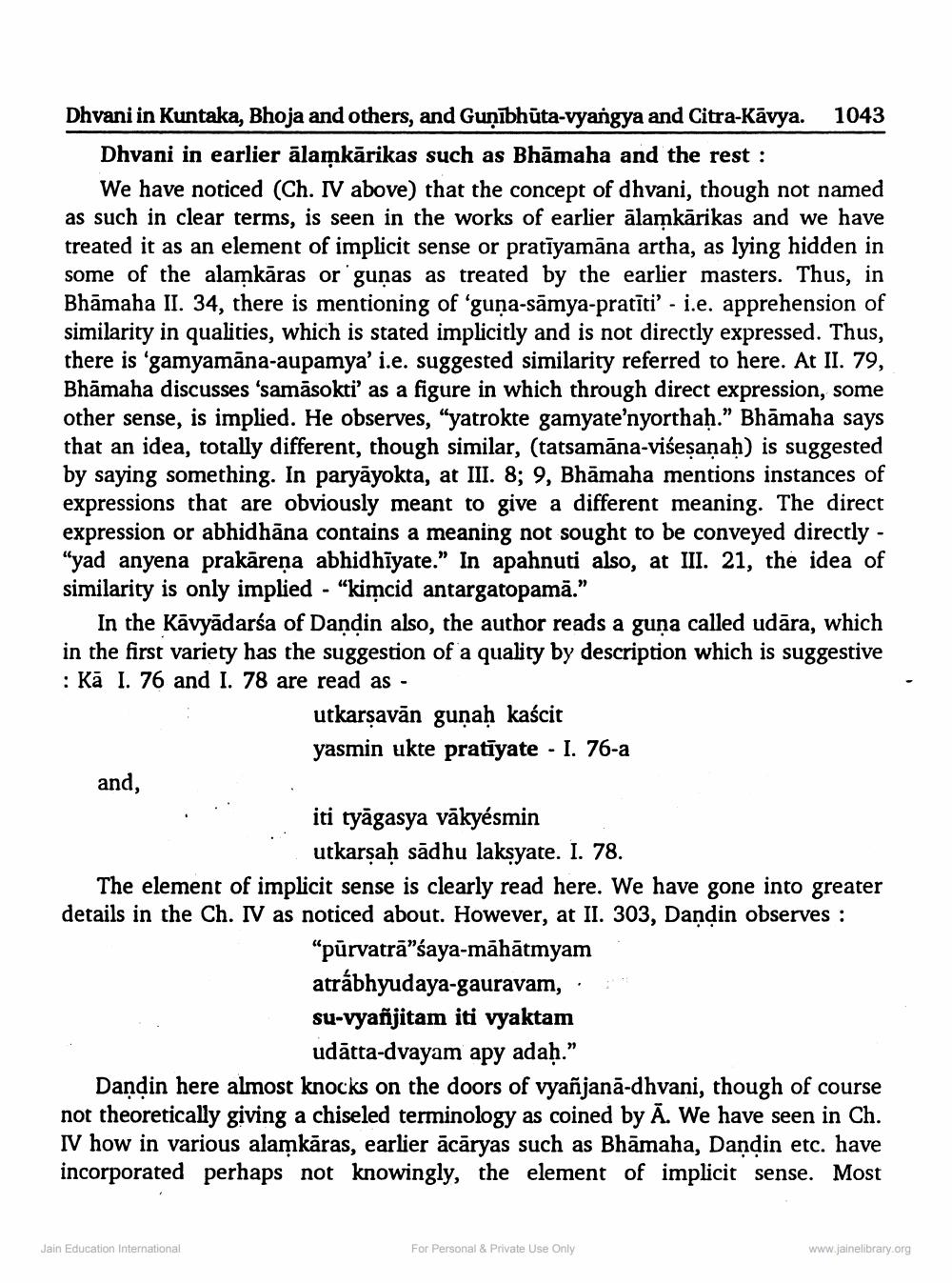________________
Dhvani in Kuntaka, Bhoja and others, and Guņābhūta-vyangya and Citra-Kavya. 1043
Dhvani in earlier ālamkārikas such as Bhāmaha and the rest :
We have noticed (Ch. IV above) that the concept of dhvani, though not named as such in clear terms, is seen in the works of earlier alamkārikas and we have treated it as an element of implicit sense or pratiyamāna artha, as lying hidden in some of the alamkāras or gunas as treated by the earlier masters. Thus, in Bhāmaha II. 34, there is mentioning of 'guņa-sāmya-pratīti' - i.e. apprehension of similarity in qualities, which is stated implicitly and is not directly expressed. Thus, there is 'gamyamāna-aupamya' i.e. suggested similarity referred to here. At II. 79, Bhāmaha discusses 'samāsokti' as a figure in which through direct expression, some other sense, is implied. He observes, "yatrokte gamyate'nyorthah.” Bhāmaha says that an idea, totally different, though similar, (tatsamāna-viśeşanah) is suggested by saying something. In paryāyokta, at III. 8; 9, Bhämaha mentions instances of expressions that are obviously meant to give a different meaning. The direct expression or abhidhāna contains a meaning not sought to be conveyed directly - "yad anyena prakāreņa abhidhiyate." In apahnuti also, at III. 21, the idea of similarity is only implied - “kimcid antargatopamā."
In the Kāvyādarśa of Dandin also, the author reads a guna called udāra, which in the first variety has the suggestion of a quality by description which is suggestive : Kā I. 76 and I. 78 are read as -
utkarsavān gunaḥ kaścit
yasmin ukte pratīyate - I. 76-a and,
iti tyāgasya vākyésmin
utkarşaḥ sādhu lakṣyate. I. 78. The element of implicit sense is clearly read here. We have gone into greater details in the Ch. IV as noticed about. However, at II. 303, Dandin observes :
“pūrvatrā”saya-māhātmyam atrábhyudaya-gauravam, su-vyañjitam iti vyaktam
udātta-dvayam apy adaḥ.” Dandin here almost knocks on the doors of vyañjanā-dhvani, though of course not theoretically giving a chiseled terminology as coined by Ā. We have seen in Ch. IV how in various alamkāras, earlier ācāryas such as Bhāmaha, Dandin etc. have incorporated perhaps not knowingly, the element of implicit sense. Most
Jain Education International
For Personal & Private Use Only
www.jainelibrary.org




